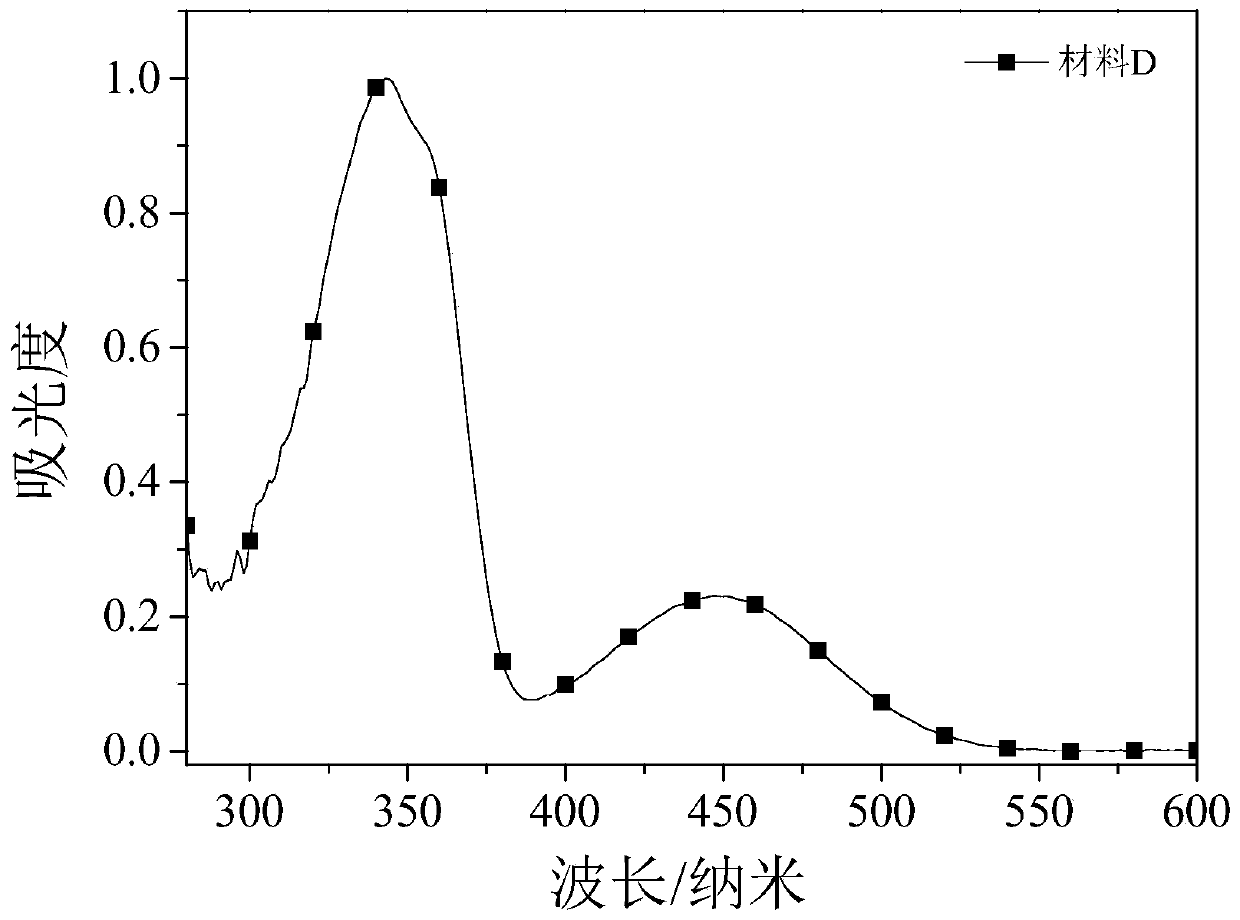Aggregation-induced room-temperature phosphorescent orange-red electroluminescent compound and preparation method and application thereof
A room-temperature phosphorescence and orange-red technology, which is applied in the field of aggregation-induced room-temperature phosphorescence orange-red electroluminescent compounds and their preparation, can solve problems such as device efficiency reduction, electroluminescent spectrum blue shift, and restrictions on commercial production, and achieve production High efficiency, strong stability, simple method and easy operation
- Summary
- Abstract
- Description
- Claims
- Application Information
AI Technical Summary
Problems solved by technology
Method used
Image
Examples
Embodiment 1
[0044] The general formula of the aggregation-induced room temperature phosphorescence orange-red organic light-emitting material prepared in this example is shown in formula I, and the representative compound is shown in formula II, wherein specific compounds are used as examples: 6-(4-([1, 1'-diphenyl]-4-yl(9,9-dimethyl-9H-fluoren-2-yl)amino)phenyl)-2-(2'-methyl-[1,1': 3',1"-terphenyl]-5'-yl)-1H-benzisoquinoline-1,3-dione, whose molecular formula is C 64 h 46 N 2 o 2 , the structural formula is:
[0045]
[0046] Concrete preparation steps are as follows:
[0047]
[0048] 1. Preparation of precursor 2,6-diphenyl-4-aminotoluene
[0049] Under the protection of argon, 3g of 2,6-dibromo-4-nitrotoluene, 3g of sodium tetraphenyl boride, 8g of potassium carbonate, 0.3g of tetrabutylammonium bromide and 0.030g of palladium chloride were mixed and placed in In 20 mL of anhydrous acetone, stir overnight in an oil bath at 55°C. After the reaction was finished, the soluti...
Embodiment 2
[0055] The aggregation-induced room temperature phosphorescence orange-red organic light-emitting material 6-(4-(9H-carbazolyl-9-yl)phenyl)-2-(4-(tert-butyl)phenyl)-1H prepared in this example - Benzisoquinoline-1,3-dione, whose molecular formula is C 40 h 30 N 2 o 2 , the structural formula is:
[0056]
[0057] The preparation method comprises the following steps:
[0058]
Embodiment 3
[0060] Aggregation-induced room temperature phosphorescence orange-red organic luminescent material 6-(4-([1,1'-diphenyl]-4-yl(9,9-dimethyl-9H-fluoren-2-yl)amino )phenyl)-2-(2'-methyl-[1,1':3',1"-terphenyl]-5'-yl)-1H-benzisoquinoline-1,3-dione Prepare the non-doped electroluminescent device A as the light-emitting layer material, and the specific steps are as follows:
[0061] 1. Clean the ITO glass in an organic solvent, dry it with nitrogen, and expose it to an ultraviolet-ozone atmosphere for 30 minutes.
[0062] 2. At 4.0 x 10 –4 Under the vacuum degree of Pa, the materials of the hole blocking layer, the hole transport layer, the light-emitting layer and the electron transport layer are sequentially evaporated at a rate of 0.1nm / s, and finally LiF / Al is used as the cathode. The structure of the device is as follows: ITO|HATCN(20nm)|TAPC(40nm)|luminescent material 7(20nm)|TMPYPB(40nm)|LiF(1nm)|Al(150nm), see Figure 6 . Among them, TAPC is 4,4'-cyclohexylbis[N,N-bis(4-...
PUM
| Property | Measurement | Unit |
|---|---|---|
| decomposition temperature | aaaaa | aaaaa |
| temperature | aaaaa | aaaaa |
Abstract
Description
Claims
Application Information
 Login to View More
Login to View More - R&D Engineer
- R&D Manager
- IP Professional
- Industry Leading Data Capabilities
- Powerful AI technology
- Patent DNA Extraction
Browse by: Latest US Patents, China's latest patents, Technical Efficacy Thesaurus, Application Domain, Technology Topic, Popular Technical Reports.
© 2024 PatSnap. All rights reserved.Legal|Privacy policy|Modern Slavery Act Transparency Statement|Sitemap|About US| Contact US: help@patsnap.com










